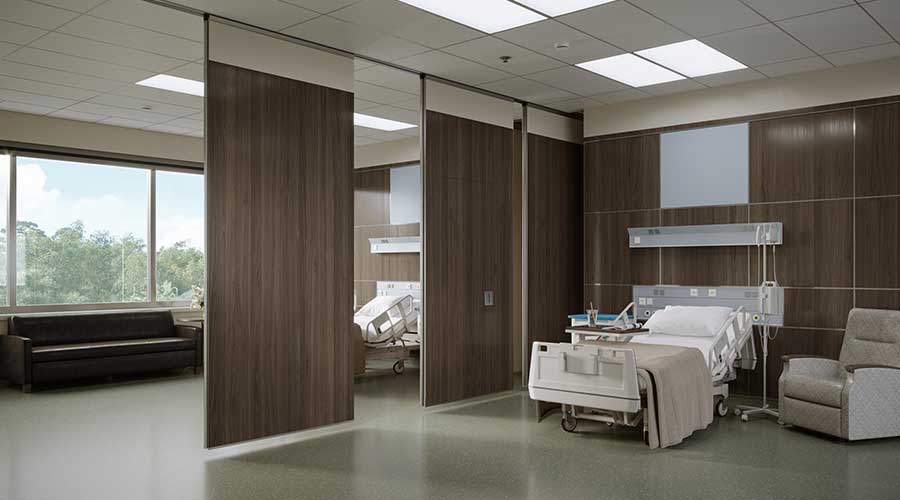Acoustics can be subtle yet very critical to healthcare facilities and their inhabitants. When properly done, acoustics can provide privacy, improve wellness and reduce/control noise levels. That last point is crucial in a field such as healthcare where its facilities can get noisy, making the amount of stress patients and employees experience increase.
For patients, it can even impact how well they recover and their overall comfort.
“In the absence of strong acoustical controls, noise can interfere with a patient’s daily activities, feelings, thoughts and sleep,” says Bryan Welch, managing director at Modernfold. “Exposure to continuous noise can result in anger, exhaustion and stress-related symptoms. Attempting to recover in a noisy environment that routinely disrupts a patient’s sleep can also result in an impaired mood, increased daytime sleepiness and even impaired cognitive performance. Long-term effects include increased risk of hypertension, heart disease and stroke.”
Meanwhile with employees, they can benefit from proper acoustics through reduced stress and improved productivity. According to Niklas Moeller, vice president at LogiSon Acoustic Network, noise is a top complaint for many workplaces, with healthcare being no exception. Moeller says that when good acoustics benefit patient care, it in turn benefits the staff due to elevated patient moods and reduced demand for care. This then can affect how much effort staff must expend overcoming constant environmental stimulation, reducing their overall mental fatigue and risk of burnout.
Additionally, noise levels can be controlled or outright reduced with the right acoustical design.
“Acoustic issues can be dramatically reduced with the introduction of acoustic products,” says Michael Ackelbein, vice president of sales at Fräsch. “By offsetting the ratio between hard and soft materials, sound quality is improved; sound waves become “trapped” in sound-absorbing materials, thereby reducing unwanted reverberation. The diminishment of reverberation decreases overall noise volume, improves sound quality and provides a level of privacy – an important consideration in healthcare settings.”
Overall, proper acoustic design can be beneficial for healthcare facilities and their occupants. In a time where both patients and employees are getting increasingly stressed, implementing measures like acoustics can help alleviate the extra strain.
Jeff Wardon, Jr. is the assistant editor for the facilities market.

 Grounding Healthcare Spaces in Hospitality Principles
Grounding Healthcare Spaces in Hospitality Principles UC Davis Health Selects Rudolph and Sletten for Central Utility Plant Expansion
UC Davis Health Selects Rudolph and Sletten for Central Utility Plant Expansion Cape Cod Healthcare Opens Upper 2 Floors of Edwin Barbey Patient Care Pavilion
Cape Cod Healthcare Opens Upper 2 Floors of Edwin Barbey Patient Care Pavilion Building Sustainable Healthcare for an Aging Population
Building Sustainable Healthcare for an Aging Population Froedtert ThedaCare Announces Opening of ThedaCare Medical Center-Oshkosh
Froedtert ThedaCare Announces Opening of ThedaCare Medical Center-Oshkosh